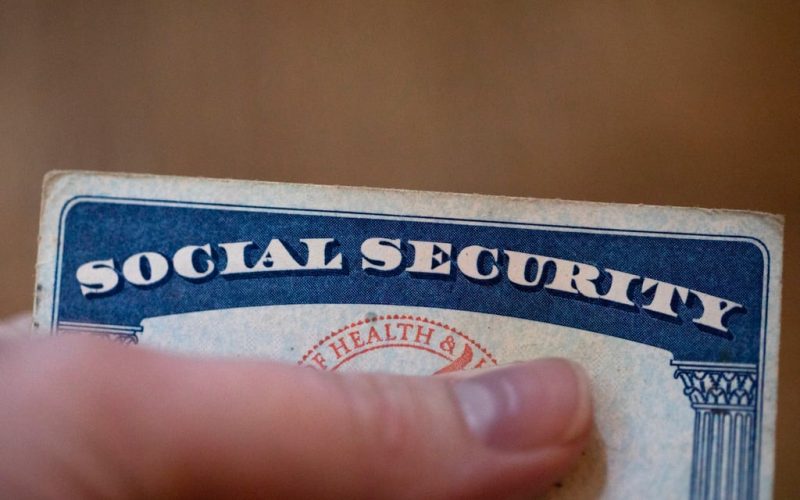In contrast to assertions that tens of millions of deceased individuals over 100 are receiving payments from the Social Security Administration, the agency’s new chief stated on Wednesday that centenarians who have passed away are not always receiving benefits.
After Trump and billionaire adviser Elon Musk made false claims on social media and in press briefings that people as old as 100, 200, and even 300 were routinely and improperly receiving benefits, Lee Dudek, the new acting SSA commissioner appointed by President Donald Trump, provided the clarification.
The figures that Trump and Musk have floated are exaggerated and inaccurately depict Social Security data, even if it is true that incorrect payments have been made, some of them to deceased individuals.
The facts are as follows:
Regarding centenarian payments, what has the Trump administration said?
At a press conference in Florida on Tuesday, Trump stated that millions and millions of people over 100 are receiving Social Security benefits. According to Trump, they are blatantly dishonest or unqualified.
“We have a very powerful Social Security with people who are 80, 70, and 90 years old, but not 200 years old, if you take all those millions of people off of it,” he remarked. Additionally, he stated that one individual in the system is identified as being 360 years old.
On his social media platform X, Musk, whose Department of Government Efficiency is working to eradicate fraud, waste, and abuse, posted a number of messages on Monday night, such as: Perhaps Twilight is real, and there are many vampires receiving Social Security and It is a major issue because tens of millions of people are listed as ALIVE in Social Security while they are unquestionably deceased. Of course. A few of these individuals would have lived before the United States of America. Consider that for a moment.
Do tens of millions of individuals who are 100 years of age or older receive benefits?
No.
The lack of a date type in Social Security’s software system, which is based on the COBOL programming language, contributes to some of the confusion. This implies that a reference point of more than 150 years ago will be used for some entries that have partial or missing birthdates. The Social Security Administration’s employment of the COBOL programming language was originally disclosed by the news outlet WIRED.
Furthermore, the Social Security Administration has not implemented a new system to appropriately annotate death information in its database, which contains approximately 18.9 million Social Security numbers of individuals born in 1920 or earlier but were not marked as deceased, according to a series of reports issued by the agency’s inspector general in March 2023 and July 2024. However, this does not imply that these people were getting benefits.
Because updating the database would have cost the agency upwards of $9 million, they chose not to do so.
Nearly none of the numberholders covered in a July 2023 Social Security OIG report presently receive SSA payments, according to the report. Additionally, starting in September 2015, payments to individuals over 115 are automatically stopped by the agency.
How does the acting commissioner of Social Security feel about that?
In a news release on Wednesday, Dudek, who took over as interim head of the Social Security Administration following Michelle King’s retirement, reaffirmed the agency’s dedication to openness. The note’s final words recognized previous reports about agency benefits for individuals above 100.
He seems to agree that the database’s default settings were the cause of the confusion.
The individuals in our records who have a Social Security number but no recorded date of death are the reported data. According to him, these people aren’t always getting benefits.
“With the assistance of DOGE and the dedication of our workforce and executive team, I am sure that Social Security will continue to provide for the American people,” Dudek stated.
To what extent is Social Security fraud a problem?
Social Security paid out about $8.6 trillion in benefits from fiscal years 2015 through 2022, including $71.8 billion, or less than 1%, in incorrect payments, according to a July 2024 report from the agency’s inspector general. Overpayments to living individuals accounted for the majority of the incorrect payments.
Furthermore, the U.S. Treasury recovered nearly $31 million in early January from various federal payments, including Social Security, that were wrongfully disbursed to deceased individuals. Former Treasury official David Lebryk stated that this recovery was only the beginning of the process.
After Congress granted the Department of Treasury temporary access to the Full Death Master File of the Social Security Administration for three years as part of the omnibus budget bill in 2021, the funds were retrieved as part of a five-month trial program. According to the Treasury, the SSA has the most comprehensive federal database of deceased people, with over 142 million entries dating back to 1899.
In January, Treasury projected that about $215 million will be recovered during the course of its three-year access period, which is scheduled to run from December 2023 to 2026.
Which issues are raised by false information regarding Social Security benefits?
Elon Musk deserves two cheers if he can identify and stop unlawful payments, according to Chuck Blahous, a senior research strategist at George Mason University’s Mercatus Center.
However, according to Blahous, Social Security would rank closer to the bottom of the list rather than the top when it comes to identifying the federal government agencies with the highest error rates. Medicaid incorrect payment rates have increased significantly after the ACA’s Medicaid expansion.
Go after any unlawful payments that are discovered, by all means, but let’s not act as though that’s the main source of the system’s financial issues, he said.
The assertions made by Musk and Trump will lead people to believe that the answers to the government’s financial issues are easier than they seem, according to Sita Nataraj Slavov, a professor of public policy at George Mason University’s Schar School of Policy and Government.
According to Slavov, the true worry is that this assertion can mislead people into believing that there is a simple solution to Social Security’s financial issues and that solvency can be restored without sacrificing anything in the way of greater taxes or reduced benefits. This is just untrue.
Regarding the criticism, what is the White House saying?
White House spokesman Karoline Leavitt cited the Social Security Inspector General’s report.
According to her, a prior investigation found that the SSA made erroneous payments totaling at least $71.8 billion. In an effort to safeguard American taxpayers, the Social Security Administration is currently searching the entire government for additional waste, fraud, and abuse.
__










